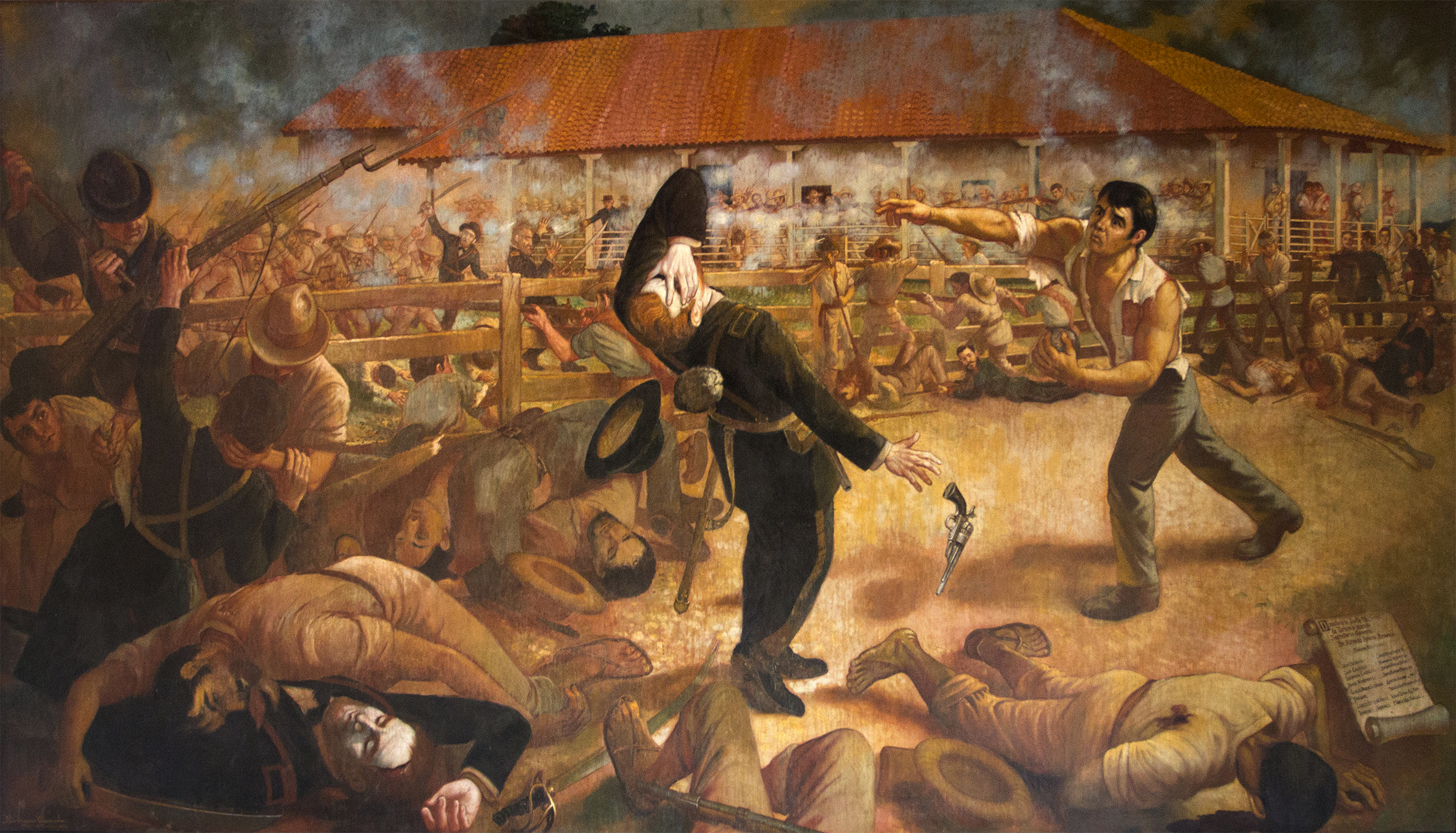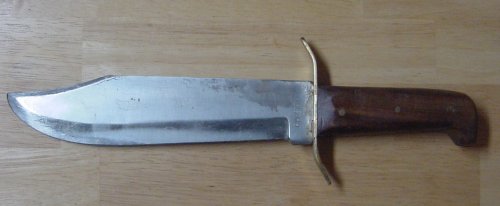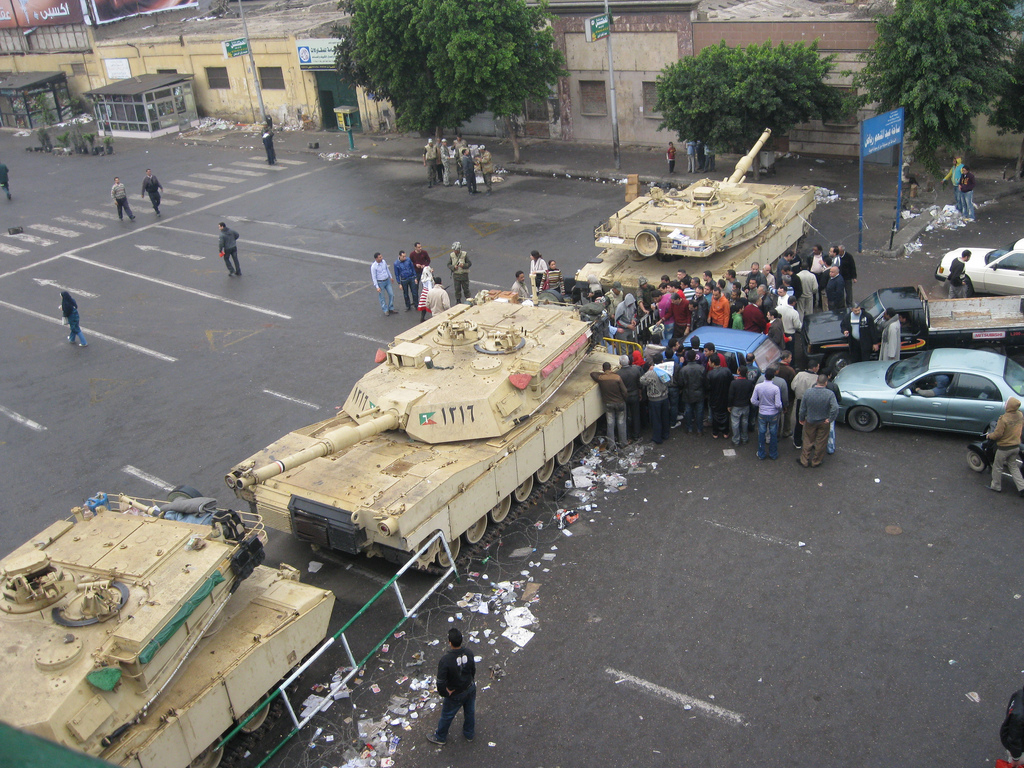|
Juan Davis Bradburn
Juan Davis Bradburn (born John Davis Bradburn; 1787 – April 20, 1842) was a brigadier general in the Mexican Army. His actions as commandant of the garrison at Anahuac in Mexican Texas in 1831 and 1832 led to the events known as the Anahuac Disturbances. Born and raised in the United States, Bradburn's first career was as a merchant and slave trader. He likely first entered Mexico in 1812 as part of the Gutiérrez–Magee Expedition fighting Spanish control of Texas. When the expedition was quashed, Bradburn moved to Louisiana, where he served in the Louisiana militia during the Battle of New Orleans. After his discharge, Bradburn spent several years fighting for Mexican independence. After Spain relinquished its hold on Mexico in 1821, Bradburn became an officer in the new Mexican Army, in which he served as a courier for Emperor Agustín de Iturbide. In 1830, Bradburn established a new military and customs post, Anahuac, in Texas. The local settlers resented Bradburn's e ... [...More Info...] [...Related Items...] OR: [Wikipedia] [Google] [Baidu] |
Brigadier General
Brigadier general or Brigade general is a military rank used in many countries. It is the lowest ranking general officer in some countries. The rank is usually above a colonel, and below a major general or divisional general. When appointed to a field command, a brigadier general is typically in command of a brigade consisting of around 4,000 troops (four battalions). Variants Brigadier general Brigadier general (Brig. Gen.) is a military rank used in many countries. It is the lowest ranking general officer in some countries, usually sitting between the ranks of colonel and major general. When appointed to a field command, a brigadier general is typically in command of a brigade consisting of around 4,000 troops (four battalions). In some countries, this rank is given the name of ''brigadier'', which is usually equivalent to ''brigadier general'' in the armies of nations that use the rank. The rank can be traced back to the militaries of Europe where a "brigadier general ... [...More Info...] [...Related Items...] OR: [Wikipedia] [Google] [Baidu] |
Nacogdoches, Texas
Nacogdoches ( ) is a small city in East Texas and the county seat of Nacogdoches County, Texas, United States. The 2020 U.S. census recorded the city's population at 32,147. Nacogdoches is a sister city of the smaller, similarly named Natchitoches, Louisiana, the third-largest city in the southern Ark-La-Tex. Stephen F. Austin State University is located in Nacogdoches. History Early years Local promotional literature from the Nacogdoches Convention and Visitors Bureau describes Nacogdoches as "The Oldest Town in Texas". Evidence of settlement at the same site dates back to 10,000 years ago. It is near or on the site of Nevantin, the primary village of the Nacogdoche tribe of Caddo Indians. Nacogdoches remained a Caddo Indian settlement until the early 19th century. In 1716, Spain established a mission there, Misión Nuestra Señora de Guadalupe. That was the first European construction in the area. The "town" of Nacogdoches got started after the French had vacated the ... [...More Info...] [...Related Items...] OR: [Wikipedia] [Google] [Baidu] |
Tampico
Tampico is a city and port in the southeastern part of the state of Tamaulipas, Mexico. It is located on the north bank of the Pánuco River, about inland from the Gulf of Mexico, and directly north of the state of Veracruz. Tampico is the fifth-largest city in Tamaulipas, with a population of 314,418 in the city proper and 929,174 in the metropolitan area. During the period of Mexico's first oil boom in the early 20th century, the city was the "chief oil-exporting port of the Americas" and the second-busiest in the world, yielding great profits that were invested in the city's famous architecture, often compared to that of Venice and New Orleans.Dave Graham, "Crime-ridden state poses acid test for Mexican oil reform" ''Reuters,'' 25 June 2014, accesse ... [...More Info...] [...Related Items...] OR: [Wikipedia] [Google] [Baidu] |
Martín Javier Mina Y Larrea
General Martín Francisco Javier Mina y Larrea (July 1, 1789 – November 11, 1817), nicknamed ''El Mozo'' or ''El Estudiante'' (Student), was a Spanish lawyer and army officer, who later became a Mexican independence figure. Biography Francisco Javier Mina was born in Otao, Navarre, to Juan Mina, a wealthy farmer, and Maria Larrea. Mina studied Latin, mathematics, and humanities at the local seminary while living in Pamplona with his uncle and aunt, Clemente and Simona Espoz. At the age of 18, he left Otago to continue his education in Zaragoza, where he began studying law at the university. During the Peninsular War in early 1808, Spain was under occupation by French troops, prompting Mina to flee to the hills and forests of his native region. There he formed a guerrilla force of ten men. Under his leadership, the force grew to over 200 men. Mina launched raids on the French and succeeded in capturing arms, ammunition, and horses. These additional resources allowed Mina to ex ... [...More Info...] [...Related Items...] OR: [Wikipedia] [Google] [Baidu] |
Trinity River (Texas)
The Trinity River is a river, the longest with a watershed entirely within the U.S. state of Texas. It rises in extreme northern Texas, a few miles south of the Red River. The headwaters are separated by the high bluffs on the southern side of the Red River. Indigenous peoples call the northern sections ''Arkikosa'' and the parts closer to the coast ''Daycoa''. French explorer Robert Cavelier de La Salle, in 1687, named it ''Riviere des canoës'' ("River of Canoes"). In 1690 Spanish explorer Alonso de León named the river ''"La Santísima Trinidad"'' ("the Most Holy Trinity"), in the Spanish Catholic practice of memorializing places by religious references. Course The Trinity River has four branches: the West Fork, the Clear Fork, the Elm Fork, and the East Fork. The West Fork Trinity River has its headwaters in Archer County. From there it flows southeast, through the man-made reservoirs Lake Bridgeport and Eagle Mountain Lake, and eastward through Lake Worth and the ... [...More Info...] [...Related Items...] OR: [Wikipedia] [Google] [Baidu] |
Nacogdoches
Nacogdoches ( ) is a small city in East Texas and the county seat of Nacogdoches County, Texas, United States. The 2020 U.S. census recorded the city's population at 32,147. Nacogdoches is a sister city of the smaller, similarly named Natchitoches, Louisiana, the third-largest city in the southern Ark-La-Tex. Stephen F. Austin State University is located in Nacogdoches. History Early years Local promotional literature from the Nacogdoches Convention and Visitors Bureau describes Nacogdoches as "The Oldest Town in Texas". Evidence of settlement at the same site dates back to 10,000 years ago. It is near or on the site of Nevantin, the primary village of the Nacogdoche tribe of Caddo Indians. Nacogdoches remained a Caddo Indian settlement until the early 19th century. In 1716, Spain established a mission there, Misión Nuestra Señora de Guadalupe. That was the first European construction in the area. The "town" of Nacogdoches got started after the French had vacated the re ... [...More Info...] [...Related Items...] OR: [Wikipedia] [Google] [Baidu] |
Filibuster (military)
A filibuster (from the Spanish ''filibustero''), also known as a freebooter, is someone who engages in an unauthorized military expedition into a foreign country or territory to foster or support a political revolution or secession. The term is usually applied to United States citizens who incited insurrections across Latin America, particularly in the mid-19th century, usually with the goal of establishing an American-loyal regime that may later be annexed into the United States. Probably the most notable example is the Filibuster War initiated by William Walker in Nicaragua. Filibusters are irregular soldiers who act without official authorization from their own government, and are generally motivated by financial gain, political ideology, or the thrill of adventure. Unlike mercenaries, filibusters are independently motivated and work for themselves, whilst a mercenary leader operates on behalf of others. The freewheeling actions of the filibusters of the 1850s led to the n ... [...More Info...] [...Related Items...] OR: [Wikipedia] [Google] [Baidu] |
Mexican War Of Independence
The Mexican War of Independence ( es, Guerra de Independencia de México, links=no, 16 September 1810 – 27 September 1821) was an armed conflict and political process resulting in Mexico's independence from Spain. It was not a single, coherent event, but local and regional struggles that occurred within the same period, and can be considered a revolutionary civil war. Independence was not an inevitable outcome, but events in Spain directly impacted the outbreak of the armed insurgency in 1810 and its course until 1821. Napoleon Bonaparte's invasion of Spain in 1808 touched off a crisis of legitimacy of crown rule, since he had placed his brother Joseph on the Spanish throne after forcing the abdication of the Spanish monarch Charles IV. In Spain and many of its overseas possessions, the local response was to set up juntas ruling in the name of the Bourbon monarchy. Delegates in Spain and overseas territories met in Cádiz, Spain, still under Spanish control, as the Co ... [...More Info...] [...Related Items...] OR: [Wikipedia] [Google] [Baidu] |
Rezin Bowie
Rezin Pleasant Bowie ( ) (September 8, 1793 – January 17, 1841) was a planter, inventor, and mercenary. He also served three terms in the Louisiana House of Representatives. With his brother James "Jim" Bowie, Rezin Bowie smuggled slaves and worked as a land speculator. The brothers set up the first steam-powered sugar mill in Louisiana. Bowie took credit for inventing the Bowie knife, which came to prominence when used by James in the Sandbar Fight of 1827. After James moved to Mexican Texas, Rezin accompanied him on an expedition to find the Lost San Saba Mine. They did not find the mine, but their adventures in fending off a much larger Indian raiding party became widely known. In his later years Bowie suffered from poor eyesight. He lived with his wife and daughters on a plantation in Louisiana. Early years Rezin Bowie was born September 8, 1793, near what is now Gallatin, Tennessee, in Sumner County, Southwest Territory. one of ten children born to Rezin Bowie ... [...More Info...] [...Related Items...] OR: [Wikipedia] [Google] [Baidu] |
James Bowie
James Bowie ( ) ( – March 6, 1836) was a 19th-century American pioneer, slave smuggler and trader, and soldier who played a prominent role in the Texas Revolution. He was among the Americans who died at the Battle of the Alamo. Stories of him as a fighter and frontiersman, both real and fictitious, have made him a legendary figure in Texas history and a folk hero of American culture. Bowie was born in Kentucky. He spent most of his life in Louisiana, where he was raised and where he later worked as a land speculator. His rise to fame began in 1827 on reports of the Sandbar Fight near present-day Vidalia, Louisiana. What began as a duel between two other men deteriorated into a mêlée in which Bowie, having been shot and stabbed, killed the sheriff of Rapides Parish with a large knife. This, and other stories of Bowie's prowess with a knife, led to the widespread popularity of the Bowie knife. Bowie enlarged his reputation during the Texas Revolution. After moving to Tex ... [...More Info...] [...Related Items...] OR: [Wikipedia] [Google] [Baidu] |
Martial Law
Martial law is the imposition of direct military control of normal civil functions or suspension of civil law by a government, especially in response to an emergency where civil forces are overwhelmed, or in an occupied territory. Use Martial law can be used by governments to enforce their rule over the public, as seen in multiple countries listed below. Such incidents may occur after a coup d'état ( Thailand in 2006 and 2014, and Egypt in 2013); when threatened by popular protest (China, Tiananmen Square protests of 1989); to suppress political opposition ( martial law in Poland in 1981); or to stabilize insurrections or perceived insurrections. Martial law may be declared in cases of major natural disasters; however, most countries use a different legal construct, such as a state of emergency. Martial law has also been imposed during conflicts, and in cases of occupations, where the absence of any other civil government provides for an unstable population. Examples of ... [...More Info...] [...Related Items...] OR: [Wikipedia] [Google] [Baidu] |
Battle Of Medina
The Battle of Medina was fought approximately 20 miles south of San Antonio de Bexar (modern-day downtown San Antonio in the U.S. state of Texas) on August 18, 1813, as part of the Mexican War of Independence against Spanish authority in Mexico. Spanish troops led by General José Joaquín de Arredondo defeated republican forces (calling themselves the ''Republican Army of the North''), consisting of Tejano-Mexican and Tejano-American revolutionaries participating in the Gutiérrez–Magee Expedition, under General José Álvarez de Toledo y Dubois. It was the deadliest battle in Texas history. Background Bernardo Gutiérrez de Lara took up the effort to free Texas from Spain. Colonel Gutiérrez visited Washington, D.C., gaining some support for his plans. In 1812, Colonel Augustus Magee, who as a lieutenant had commanded U.S. Army troops guarding the border of the Neutral Ground and Spanish Texas, resigned his commission and formed the Republican Army of the North to aid th ... [...More Info...] [...Related Items...] OR: [Wikipedia] [Google] [Baidu] |






